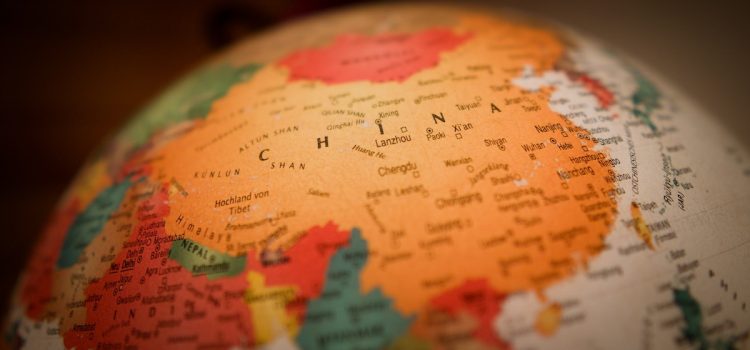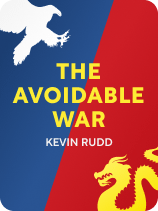

This article is an excerpt from the Shortform book guide to "The Avoidable War" by Kevin Rudd. Shortform has the world's best summaries and analyses of books you should be reading.
Like this article? Sign up for a free trial here.
How did China’s policies change when Xi Jinping came to power? What’s Xi’s vision for China?
According to Australian diplomat Kevin Rudd, Xi Jinping has serious goals in mind for China. They include maintaining the power of the Chinese Communist Party (CCP), unifying what they perceive as their territory, and increasing their global influence.
Keep reading to learn about each of these priorities and the strategies that Xi is using to achieve them.
Xi’s Priorities & Strategies
As explained by Kevin Rudd, Xi Jinping’s presidency (which began in 2013) led to changes in China’s domestic and international policies. Rudd explains that Xi’s goals—and the shift they represent from previous years—are key to understanding why tensions between the US and China have escalated over the last decade.
Under the previous leadership of Deng Xiaoping from 1978-89, China was focused on growing the economy through increased global trade and opening to foreign investment, which the US benefited from. The transition to Xi’s administration signaled a shift because China had now achieved the economic stability required to expand the scope of its priorities in ways that threaten the global supremacy of the US.
Rudd writes that Xi’s key priorities include keeping the CCP in power through strategic economic reforms, restoring Chinese territory, and increasing China’s global influence. In this section, we’ll describe each of these strategies in more detail as well as how they contribute to China’s power struggle with the US.
(Shortform note: In addition to economic stability, a political shift within China at the end of Deng’s term also contributed to Xi’s priorities. People had turned against Deng politically because of the Tiananmen Square incident in which many Chinese citizens were killed. In addition, despite China’s rapid economic growth, it had also started struggling with corrupt officials profiting from Deng’s financial policies. Because of these two factors, the CCP benefited politically from distancing themselves from Deng’s policies and ideology, leading to less liberal and more state-controlled economic policies.)
| Clarifying China’s Political Labels Several different terms are used in the book to describe Xi’s ideology as well as that of the CCP—for example, communism, Marxism-Leninism, socialism, and socialism with Chinese characteristics. Discrepancies in the language describing China’s government and economic system are partly due to various external interpretations of Chinese politics versus its self-identified labels. For example, one article describes China’s government as a multi-party cooperative system while another describes it as an authoritarian one-party system. Here, we’ll explain the differences between some of the key terms in the book and who uses them: Communism: This is a political, economic, and social ideology promoting a classless economic system where all property is owned communally or by the state. While communism remains central to Chinese ideology, as evidenced by the ruling party’s name “Chinese Communist Party,” the CCP has adapted communist ideology in ways that are specific to China (explored more in the definition of socialism with Chinese characteristics). Socialism: Socialism is a political and economic system where resources are controlled communally rather than through private ownership and commerce. In Marxist theory, it’s a transitional stage between capitalism and communism. The CCP self-identifies as having socialist values at its core. However, others argue that China’s system is more aptly defined as state capitalism—a hierarchical capitalist system guided by the central government. Marxism-Leninism: This is a political and economic framework established by the German philosopher Karl Marx and elaborated on by Vladimir Lenin in the Soviet Union. The key aspect of Marxism-Leninism is a two-part revolution in which working-class wage laborers seize power by force and establish a one-party socialist state where the party controls the “means of production” (the land, equipment, and resources needed to make products). The second part of the revolution is transitioning from a socialist state into a classless, stateless communist society. Rudd refers to Xi as Marxist-Leninist, and the CCP mentions Marxism-Leninism as one of its guiding philosophies among others. Nationalism: Nationalism is a sense of loyalty and devotion to a nation, often with a connotation of cultural superiority and the promotion of a country’s self-interests over others. This is another general term that Rudd uses to describe Xi’s ideology. Marxist-Nationalist: This is Rudd’s term based on his analysis of Xi’s particular brand of communism. It means that Xi appeals to the CCP using Marxist-Leninist ideology, but he appeals to the general population of China more through nationalist rhetoric. Socialism with Chinese characteristics: This term is used by Xi and the CCP itself and was first described by Deng in 1982. It combines China’s underlying socialist ideals with the practical need to allow some private ownership and enterprise to develop China’s economy and meet the material needs of its people in the short term. It combines state ownership and private ownership while retaining overarching control over private enterprise. Authoritarian-capitalist: This is the term that Rudd uses essentially in place of “socialism with Chinese characteristics.” He defines it as a system where the government maintains control over the business sector and prioritizes state-owned enterprises over privately owned businesses. However, the word “authoritarian” also implies that the Chinese government limits individual freedom of thought and action—an argument supported by instances of violence and retaliation against political dissenters and wealthy private business owners. |
#1: Maintaining the CCP’s Power Through Economic Reform
According to Rudd, the core of Xi’s vision is retaining control over the CCP, keeping the CCP in power in China, and using Marxist-Leninist ideology to guide the country’s economic policies. Rudd says that because the CCP is rooted in Marxist-Leninist ideology, which prioritizes the economic well-being of the populace, economic prosperity for the Chinese people is Xi’s primary strategy for keeping himself and the CCP in power.
According to Rudd, the Chinese people will be content with the CCP as long as unemployment stays low, the standard of living continues to rise, and disparities of wealth stay low. If the economy falters, however, Xi and the CCP would face political backlash and risk losing power. Xi’s economic reforms—rooted in these driving forces—are referred to as the New Development Concept (NDC).
Rudd writes that the NDC contributes to tensions with the US because it differs from American ideology about free market capitalism and because of its direct economic impact on the US.
In contrast, the US culturally venerates and legally protects private enterprises. Rudd suggests that both the US and China fear that the economic ideology of the other could threaten their own by fostering internal political resistance.
In addition to the ideological differences between the two economic models, Xi’s NDC directly influences the US economy in negative ways (from the US perspective).
#2: Restoring Chinese Territory by Increasing Military Power
The next key priority of Xi’s that Rudd discusses is national unification—a goal Xi wants to achieve by restoring and protecting Chinese territories by increasing China’s military power. China wants to maintain its control of Hong Kong, Tibet, Inner Mongolia, and the state of Xinjiang. It also aspires to fully reunify with Taiwan and the Senkaku Islands in Japan. (Shortform note: As of May 2023, China still has control of Hong Kong, Tibet, Inner Mongolia, and Xinjiang.)
This priority escalates tensions with the US because the US no longer has a major advantage over China in terms of military capability as a result of China’s military upgrades. This limits the US’s ability to reinforce its political interests abroad solely based on its military superiority since China could retaliate.
(Shortform note: Although China’s military has advanced significantly under Xi, some experts argue that it still lags behind the US in terms of experience in military combat. On the other hand, some worry about the increasing size of China’s nuclear arsenal.)
Rudd writes that China has been upgrading its military in terms of equipment and training and has been increasing its naval activity in the South and East China Seas to intimidate some of the places (like Taiwan) that it aims to reunify with China. He asserts that China also conducts military patrols in the area to deter US intervention in a potential military conflict.
China has claimed all of these places, but they don’t necessarily want to be part of China. Rudd suggests that although China also uses political and economic strategies to exert control over these territories (which concerns the US for the reasons discussed in the previous section), the strengthening of the Chinese military is particularly troubling to the US.
(Shortform note: In addition to China’s actions in the Pacific and abroad, the US government is increasingly concerned with high-altitude surveillance balloons in the US and other countries. Experts claim that this type of balloon is capable of intercepting communication signals, posing a security risk for the US.)
#3: Increasing Influence Through Investment and Global Structures
Xi’s third key priority is increasing China’s global power through investment in developing countries and by influencing global institutions. Rudd says that, through these actions, China is challenging the geopolitical status quo—what he refers to as the “global rules-based order”—by becoming a key economic and political player. The components of the geopolitical status quo include things like development models for investing in low-income countries and the rules of governing bodies such as the World Trade Organization (WTO) and the UN.
One key tool for asserting strategic global power is China’s Belt and Road Initiative (BRI), an infrastructure project to revive China’s historic trade relations and increase the country’s economic ties to Europe, the Middle East, and South Asia.
Rudd claims that the BRI contributes to China’s power struggle with the US because the BRI’s success would place China in a more favorable diplomatic and economic position with countries around the world. This means that China would challenge the US as the most influential nation, and China would be less likely to face international backlash for its actions abroad (like military action against Taiwan) or domestically (such as human rights abuses).
Another aspect of the BRI includes investment in infrastructure (like telecommunications) and business projects throughout the developing world. Rudd argues that this investment has two major benefits for China: It increases access to raw materials and markets for Chinese products, and it provides political leverage over the US.
Exercise: Reflect on China’s Priorities & Strategies
Now that we’ve covered China’s core priorities under Xi’s leadership, reflect on how Rudd’s argument has changed your understanding of this politically complex situation and how it might unfold in the future.
- Rudd describes the following priorities in modern China: keeping the CCP in power through economic reform and growth, restoring and maintaining Chinese territory by expanding the military, and increasing its global influence through investment and its role in global governing bodies. How do these priorities compare to your own government’s high-level goals?

———End of Preview———
Like what you just read? Read the rest of the world's best book summary and analysis of Kevin Rudd's "The Avoidable War" at Shortform.
Here's what you'll find in our full The Avoidable War summary:
- The complex factors contributing to hostility between the US and China
- How a military conflict between the US and China can be avoided
- The huge toll a US-China war would take on global stability






